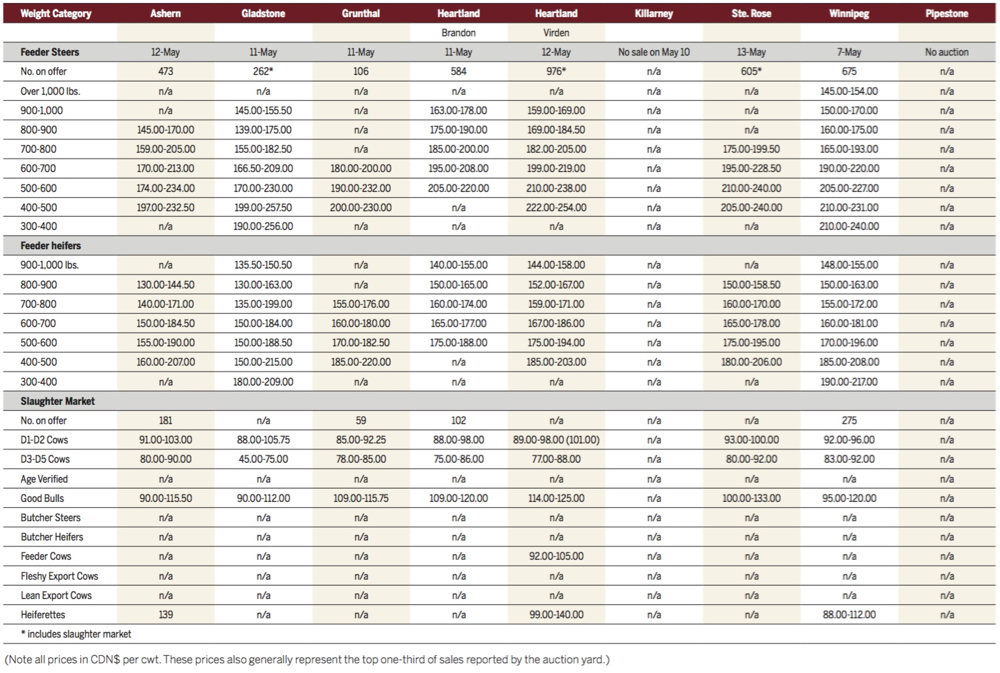Fewer cattle went through the rings at Manitoba auction sites during the week ending May 13, but the slaughter market is seeing higher numbers as the mercury rises.
With temperatures hovering around 20 C across southern Manitoba in the midst of dry conditions, more producers chose to sell butcher cattle earlier than expected. At least 610 were sold during the week, compared to at least 550 during the previous week, at mostly higher prices.
“For the third week in a row, we’ve seen seasonal highs for the cull cow market. The hamburger market (is) right around the corner for summer,” said Rick Wright, livestock order buyer for Heartland Livestock Services at Brandon and Virden. “Due to the dry weather conditions, there are more cull cows coming to town than what we’ve seen at this time of year.”
Read Also

Canadian canola prices hinge on rain forecast
Canola markets took a good hit during the week ending July 11, 2025, on the thought that the Canadian crop will yield well despite dry weather.
However, 4,298 total cattle were sold during the week compared to 7,434 the previous week. Killarney did not conduct a sale during the week ending May 13.
“Producers are on the land seeding, so their focus is on getting the crops in rather than getting the cattle ready for pasture, ready for selling,” Wright said.
“The markets have been very volatile over the last three weeks due to the high cost of feeding the cattle (which) has made the market less attractive than what guys were thinking.”
On the Chicago Mercantile Exchange (CME), the June contract for live cattle was trading at US$115.575 per hundredweight on May 13, after hitting US$119.50/cwt the previous day. Meanwhile, the May feeder contract traded at US$137.10/cwt, up from as low as US$128.25 one week earlier.
Rising commodity prices and a weakening U.S. dollar have supported the Canadian dollar, as it reached its highest level since 2015. Wright said the loonie is also adding to a downturn in the feeder market.
“If we had a (70-cent U.S.) dollar instead of an 82-cent dollar, you can just imagine what the cows and fed cattle would (cost). (They) would be considerably higher,” he added. “We’re so far ahead of the American market, price-wise, that they’re not even a contender… The industry is bringing feeder cattle up from the U.S.… coming into Alberta and Ontario because with our strong dollar, they can buy them cheaper down there and bring them up and buy them out of Western Canada.”
Wright expects fewer cattle to be sold in the coming weeks with plenty of volatility in pricing. Sales at some Manitoba auction sites will also begin to occur biweekly.
“It’s going to be hard to get a market established at some places over the next few weeks just because of low numbers,” he said. “Some markets that traditionally close over the summer are talking about staying open because if it’s dry, there’s going to be a bigger demand.”




















